The Good Builder Wants His Work Inspected by the Best Inspector
Copyright© 2012
By: Fred Willcox
All Rights Reserved.
I was called by a homeowner who had concerns about some water penetration in his house. The house was four years old. He was in a hurry as the builder was going to be out in the next couple of days to remove and replace the siding on the front of his house. So I made an appointment to go out and see his house the next day.
The house was one side of a duplex that had been built four years ago. The houses were completed just before Hurricane Ike and there was some water penetration from wind driven rain into both houses from the hurricane.
The builder had made repairs to the damage from the hurricane.Since that time, there has been an issue with water penetration on the front wall of each house in the duplex. The builder was going to remove and replace the wood siding on the front of each house in an attempt to stop the water penetration.
I went out and ended up looking at both houses.
The flashing on the window penetrations had been improperly installed as shown by the red arrow in the photograph below. 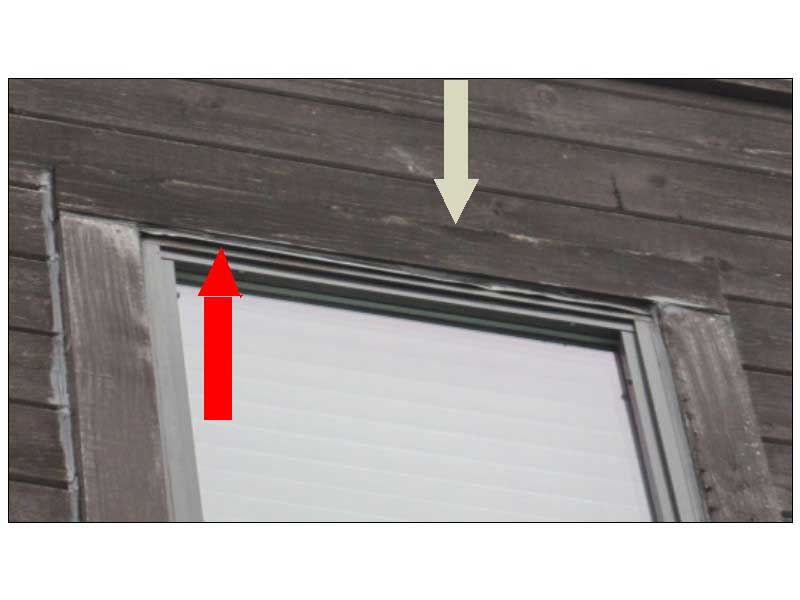
I recently heard an inspector chastise another inspector for not writing up a similar flashing installation on a house as the flashing did not extend out to the outer edges of the window trim. Actually, both inspectors are wrong. The window header flashing is supposed to be installed on top of the top piece of trim at the area shown by the white arrow in the photograph above. As installed on the building, the flashing is only a drain however, the drain is not functional as the trim piece obstructs the flow of water and acts as a dam. Flashing installed over the top of the trim piece prevents water from entering the window frame at all.
The trim on the corners of the buildings had separated at the tops of the trim pieces and had allowed water penetration into the houses.
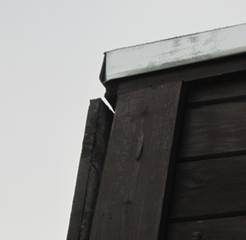
While this installation is common, the trim should have been fastened to the framing at the top of the piece of trim to prevent the trim board from separating from the building. A better installation would have been to extend the vertical trim piece up under the metal cap and to have then butt jointed the horizontal trim pieces to the vertical trim.
The junctions of the balcony guard walls/parapets with the wood siding were not flashed or sealed and the tops of these stucco walls were not capped to prevent water penetration.
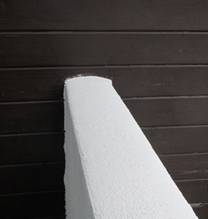
While real estate inspectors are limited to visible items and inspectors cannot see damage concealed by wall covering material, all of these factors noted above were visible and contributed to the water penetration inside the houses.
I sent an initial report to the clients who forwarded the reports to the builder.
I agreed to meet with the builder the next day.
I met the builder early in the afternoon after most of the siding had been installed.
The builder told me that he and I had met a couple of years before and that I had spent some time convincing him to install drains at all wall terminations on stucco and stone veneers. As a result of my lecture, he began installing drains at all wall terminations. He said that he had gotten nothing but great feedback and praise for installing these drains and that since he had starting using wall drains he had not had any callbacks for damage to stucco veneers or for water penetration.
He went onto say that both of these houses had been inspected when the now owners bought them. He said that neither inspector noted the improper water proofing of the wall penetrations. He said that he used to like these kinds of inspectors, the kind that never call out any problems and that Realtors prefer, as they did not cause any problems but that he had learned that these type inspectors were bad news to everyone. He said, to the best of my memory: ‘If you had inspected these houses, you would have called out the problems and I would have fixed them. I would have been able to make the subs, who created the problems, make the proper repairs, they would have learned something and we wouldn’t have as many problems in the future. Those sub contractors are gone so I have to pay for all the repairs. I would not be here today ripping into these houses, I wouldn’t have to repair all the structural damage and, most importantly, my clients would not be upset with me. I’d much rather have inspectors like you who find the problems at the beginning. It’s a lot better and cheaper for all of us.
He then asked me about what all he had done wrong on these houses so he wouldn’t repeat the mistakes in the future.
Some of the damages that had been uncovered by the time I arrived at the houses were:
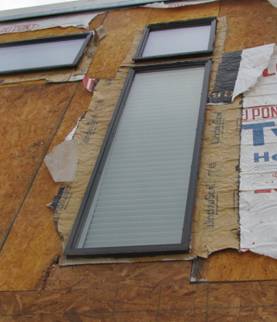
There had been water penetration alongside of the windows. The wall penetration sealing materials that builders and some inspectors rave about had been degraded by the water penetration. The sealing materials had not prevented all water penetration or damage. Had the wall penetrations been properly flashed the chances of water penetration would have been greatly reduced if not eliminated.
Some of the OSB (Oriented Strand Board) wall sheathing had been water damaged and had to be replaced.
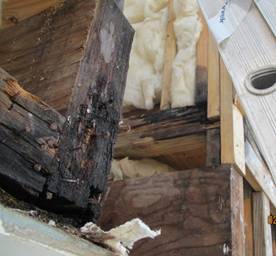
Wall framing and support beams had been water damaged and had decayed.
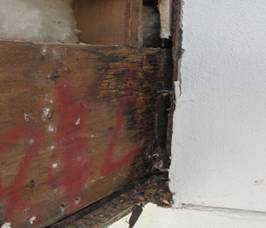
A structural beam had been water damaged and had to be replaced.
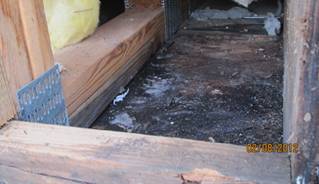
The OSB sheathing used to support the ceiling materials had been water damaged and decayed and had to be replaced.
There was also water damage and decay in some of the sub flooring materials.
Most, if not all, of this damage could have been prevented had the inspectors done their jobs. The proper installation of wall flashings is an item required for inspection and reporting as deficient by the minimum standards of practice for real estate inspectors.
The original inspectors, according to the builder, were recommended by the Realtors. And these inspectors may still be popular with the Realtors. They are not however at all popular with the people who paid them to perform the inspections and they are not popular with the builder.
The only people who benefited from the “inspections” performed by original inspectors were the inspectors themselves and the Realtors.
